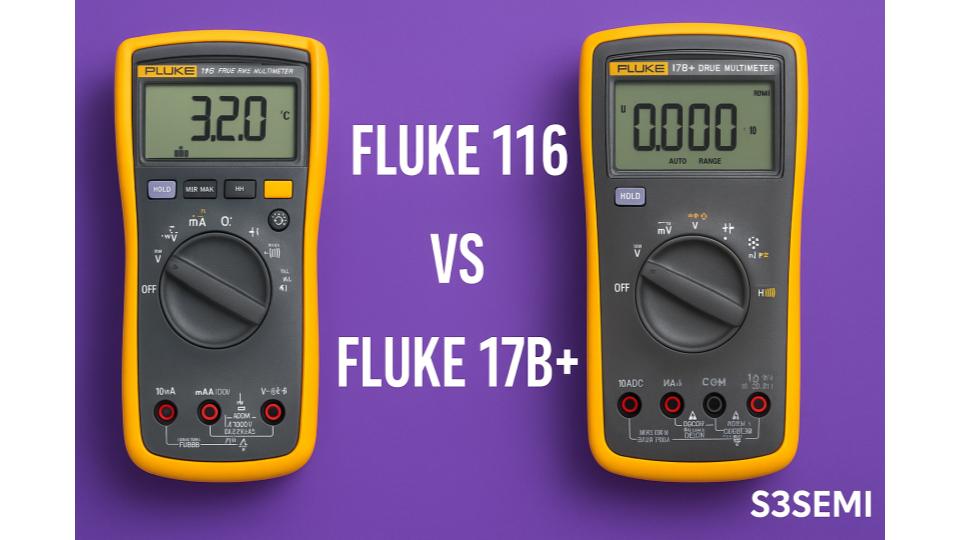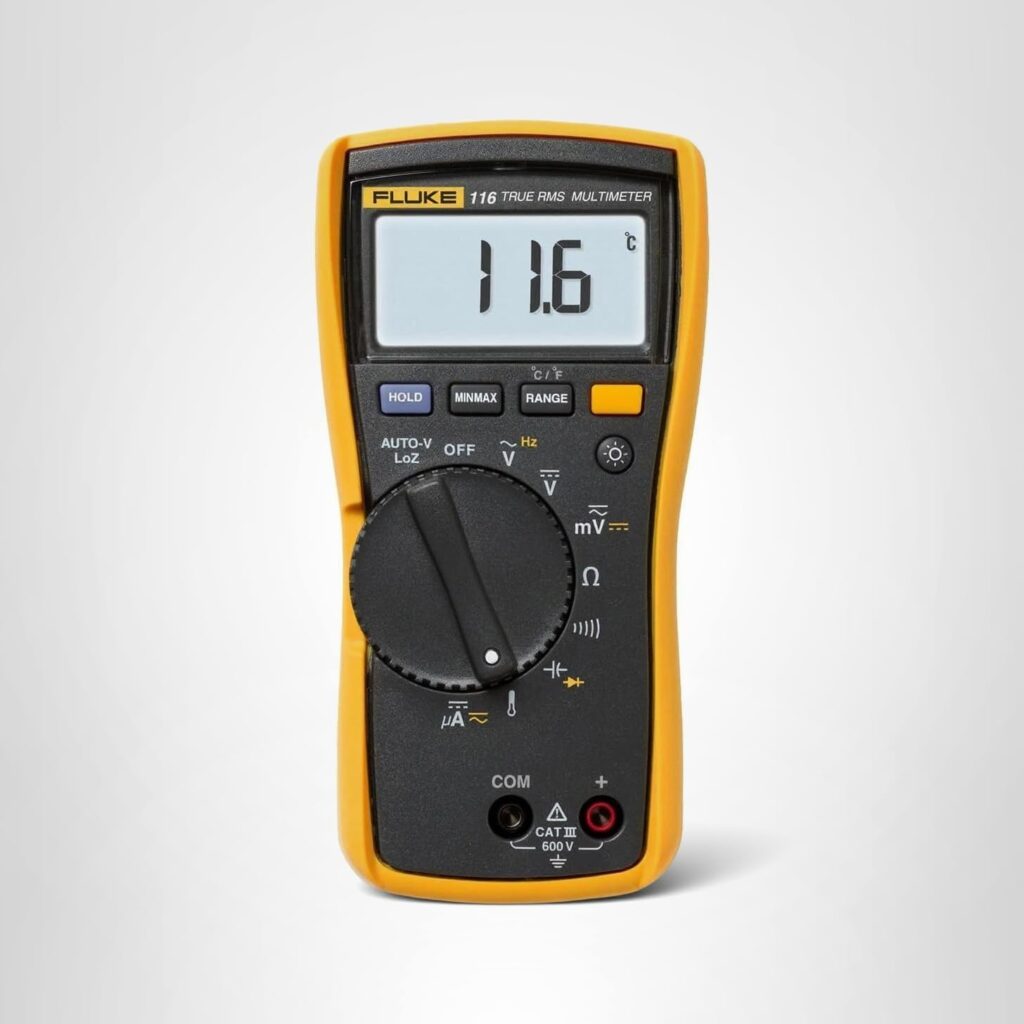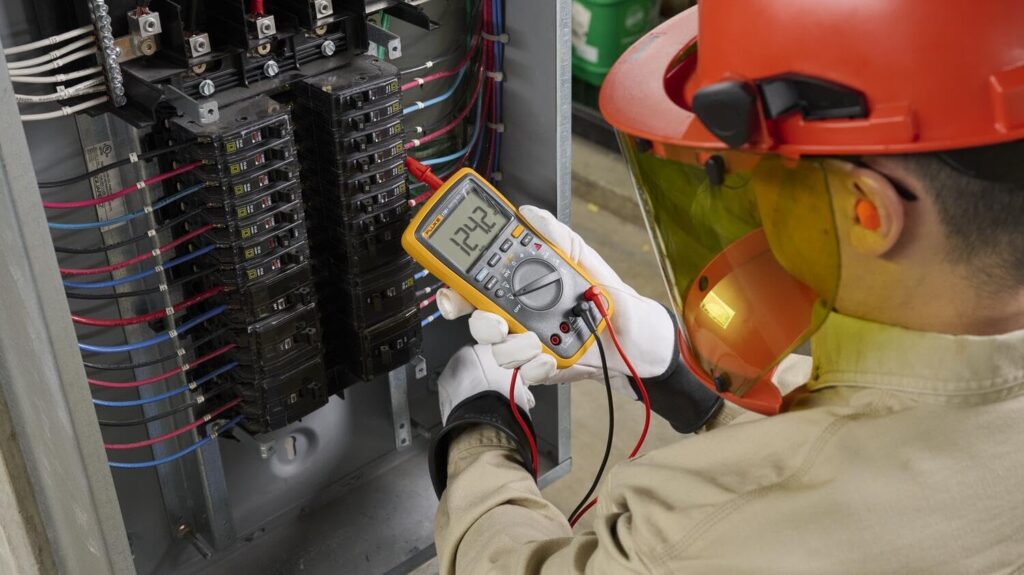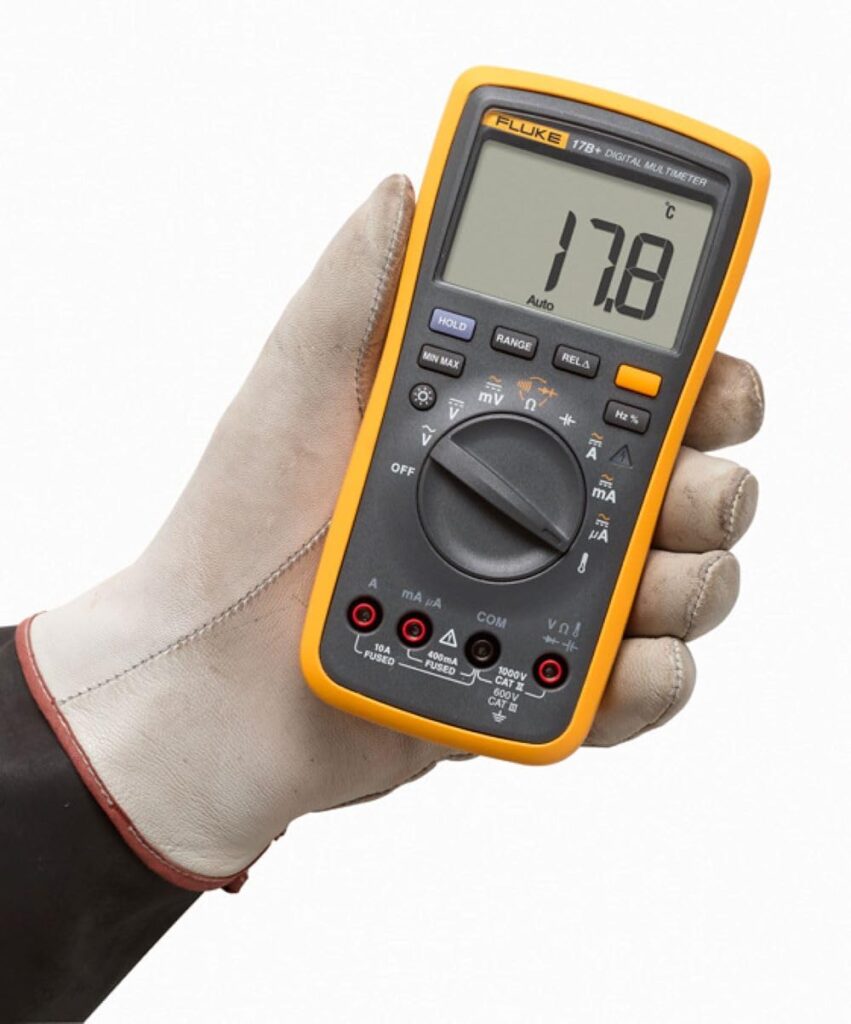Fluke has built a reputation for producing some of the most durable and accurate multimeters in the world. Two models that often get compared are the Fluke 116 and the Fluke 17B+.
🏷️ Fluke Multimeter Deals ⭐⭐⭐⭐
While both are True RMS multimeters designed for professionals, they serve different audiences – the 116 targets HVAC technicians, while the 17B+ is a general-purpose meter that offers excellent value for electricians and hobbyists alike.
Let’s take a closer look at how these two models differ and which one is right for you.
🔍 Overview of the Fluke 116
The Fluke 116 is purpose-built for HVAC (heating, ventilation, and air conditioning) professionals.
It combines essential electrical measurement functions with built-in temperature and microamp capabilities, making it ideal for diagnosing control systems and flame sensors.
Key Features:
- True RMS for accurate readings on non-linear loads
- Built-in thermometer for HVAC temperature measurements
- Microamp measurement for testing flame sensors
- LoZ (Low Input Impedance) mode to prevent ghost voltages
- Backlit display for dark work areas
- CAT III 600V safety rating
Best For: HVAC technicians, facility maintenance engineers, and professionals who regularly deal with control systems or heating elements.
⚙️ Overview of the Fluke 17B+
The Fluke 17B+ is a versatile, True RMS digital multimeter designed for general electrical, electronic, and industrial use.
It’s widely used in Asia and other global markets for its reliability, accuracy, and affordability.
Key Features:
- True RMS measurement for accurate AC readings
- Measures AC/DC voltage, current, resistance, frequency, capacitance, and temperature
- Large 4,000-count backlit display with fast response time
- Auto and manual ranging
- CAT III 1000V / CAT II 600V safety rating
- Rugged design suitable for field and lab environments
Best For: Electricians, field technicians, and engineers who need a durable and affordable True RMS multimeter for everyday electrical troubleshooting.
📊 Fluke 116 vs Fluke 17B+: Side-by-Side Comparison
| Feature | Fluke 116 | Fluke 17B+ |
|---|---|---|
| True RMS | ✅ Yes | ✅ Yes |
| Target User | HVAC Technicians | General Electricians / Engineers |
| Voltage Range | Up to 600V | Up to 1000V |
| Current Range | Microamps (no 10A) | Up to 10A |
| Temperature Measurement | ✅ Built-in | ✅ With thermocouple |
| Microamp Measurement | ✅ Yes | ❌ No |
| LoZ (Low Impedance) Mode | ✅ Yes | ❌ No |
| Display | Backlit LCD | Larger backlit LCD |
| Safety Rating | CAT III 600V | CAT III 1000V / CAT II 600V |
| Warranty | 3 years | 1 year (varies by region) |
| 💳 Pricing | 💲Check Price | 💲Check Price |
✅ Pros and Cons
Fluke 116 Pros
- Built-in thermometer for HVAC temperature checks
- Microamp range for testing flame sensors
- LoZ mode eliminates ghost voltages
- Compact and durable design
- Accurate True RMS readings
Fluke 116 Cons
- Cannot measure current above 600 mA
- Lower voltage range (max 600V)
- More expensive
Fluke 17B+ Pros
- Measures up to 1000V and 10A
- Includes temperature measurement (via thermocouple)
- Large, easy-to-read backlit display
- More affordable than the 116
- Excellent for general-purpose use
Fluke 17B+ Cons
- No microamp measurement
- No LoZ mode
- Not specifically optimized for HVAC applications
🏆 Verdict: Fluke 116 or Fluke 17B+?
Both multimeters are outstanding examples of Fluke’s engineering excellence, but they’re designed for different purposes.
- Choose the Fluke 116 if you’re an HVAC technician or maintenance professional who needs microamp readings for flame sensors and a built-in thermometer for quick temperature diagnostics. Its LoZ mode also helps prevent false readings caused by ghost voltages.
- Choose the Fluke 17B+ if you’re a general electrician, engineer, or hobbyist who needs a reliable True RMS multimeter for everyday use, higher voltage ranges, and affordability.
👉 In short:
- Fluke 116 = Best for HVAC and specialized diagnostics.
- Fluke 17B+ = Best for general-purpose electrical and field work.





